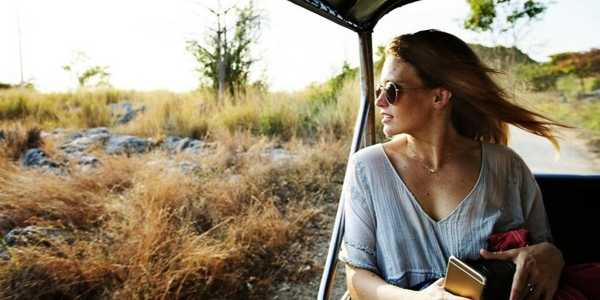When Cooks Give into Temptation: Using Foraged Ingredients in Gourmet Cooking
Cuisine is constantly looking to push boundaries and explore avant-garde boundaries. An emerging trend in fine dining is the use of wild ingredients. Chefs who use wild ingredients not only infuse their culinary creations with unique flavors, but also adopt sustainable and environmentally friendly methods. This exhibition touches on the exciting field of wild plant gastronomy and the exquisite art of collecting for fine dining.
Cuisine is constantly looking to push boundaries and explore avant-garde boundaries. An emerging trend in fine dining is the use of wild ingredients. Chefs who use wild ingredients not only infuse their culinary creations with unique flavors, but also adopt sustainable and environmentally friendly methods. This exhibition touches on the exciting field of wild plant gastronomy and the exquisite art of collecting for fine dining.
The Rise of Wild Ingredients in Fine Dining
Historical Perspective
Collecting wild ingredients is an ancient practice. Indigenous tribes and rural populations have been surviving on wild plants for thousands of years. Despite this, the penchant of chefs for using wild ingredients in haute cuisine is a relatively new phenomenon. This paradigm shift is driven by a strong desire to restore a symbiosis with nature and create dishes that reflect the local terroir.
Benefits of Collecting Wild Plants for Chefs
- Unique flavors: Collected ingredients offer flavors and textures that cannot be achieved with cultivated plants. These esoteric ingredients can elevate dishes and trigger an extraordinary culinary journey.
- Sustainability: By incorporating wild plants, chefs can reduce their reliance on commercially grown products, which often require a lot of resources for cultivation and logistics.
- Local sourcing: Gathering wild plants for gourmet use can enhance local ecosystems and reduce the carbon footprint associated with transporting food.

Important Foraged Ingredients in Gourmet Cooking
Wild herbs and Greens
Wild herbs such as nettles, dandelions and purslane are conquering gourmet kitchens. These green herbs are packed with nutrients and offer a variety of flavors, from spicy to tangy.
Edible Flowers
Edible flowers, including elderflowers, pansies and nasturtiums, add color to dishes with rich colors and delicate flavors. They are often added to salads, desserts and as garnishes.
Mushrooms
Wild mushrooms, including chanterelles, morels and porcini, are sought after for their rich, earthy flavors. When cooking gourmet with wild plants, these mushrooms are often used in risottos, soups and sauces.
Berries and Fruits
Foraged berries such as wild strawberries, elderberries and blackberries add natural sweetness and bright color to dishes. They are often used in desserts, sauces and beverages.
Challenges and Considerations When Collecting
Identification of Edible Plants
When collecting wild plants, in-depth knowledge of botanical identification is required to determine the edibility of an ingredient. Misidentification can result in serious health risks.
Seasonality
Foraged ingredients are seasonal in nature, requiring chefs to be adaptable and creative when creating menus. The availability of wild plants varies greatly depending on the season and geographic location.
Impact on the Environment
While collecting wild plants is sustainable, it must be done with care. Overharvesting can decimate local plant populations and disrupt ecological balance. Chefs using foraged ingredients must collect in a way that protects natural habitats.
The Role of Foraged Ingredients in Fine Dining
Taste Enhancement
Collecting wild plants for use in fine dining allows chefs to experiment with new flavors and textures, creating dishes that are both groundbreaking and inseparable from nature.
Storytelling Through Food
Using wild plants for fine dining allows chefs to weave a story through their culinary creations. Each ingredient has a story and a place in nature, adding depth and meaning to the culinary experience.
Menu Development
Chefs using wild ingredients often develop menus based on seasonal availability. This approach not only ensures maximum freshness, but also encourages guests to enjoy the beauty of seasonal cuisine.
Tips for Aspiring Wild Herb Chefs
Start Small
Begin to collect wild plants, including easily recognizable plants such as dandelions, nettles, and wild garlic. These plants are ubiquitous and relatively harmless.
Educate Yourself
Spend time learning about local plants and wild plant collecting practices. Literature, online courses, and wild plant workshops can provide valuable insights.
Respect Nature
Always collect wild plants with awe. Harvest carefully, pick only what is necessary, and ensure adequate regeneration of the plants and surrounding wildlife.
Work with Experts
Work with local collectors and botanists to expand your knowledge and ensure safe and sustainable collecting practices.
Unconventionally Collected Ingredients in Fine Dining
Kitchen Flora
Culinary artisans are increasingly drawn to coastal areas in search of unique ingredients. Seaweeds such as nori, wakame, and kombu add umami and mineral-rich flavors to culinary creations and are often used in stocks, salads, and garnishes.
Tree Derivatives
The use of tree derivatives is increasing. For example, birch sap can be concentrated to make a saccharine syrup, while the inner bark of certain trees can be ground into flour. These ingredients add complexity and uniqueness to both sweets and savory dishes.
Foraged Spices
In addition to herbs and vegetables, chefs also explore wild spices. For example, sumac from wild shrubs has spicy, lemony nuances, while wild fennel seeds have an anise character. These spices enhance the depth of flavor in gourmet preparations.

The Art of Integrating Foraged Ingredients
Flavor Combination Approaches
Using foraged ingredients requires a keen understanding of flavor combinations. Chefs must experiment with blends that balance the bold and often unfamiliar flavors of wild plants with other ingredients on the plate.
Texture Innovations
Foraged ingredients can create textures never before possible. For example, the gelatinous consistency of certain seaweeds can be used to create unique flavor experiences in sauces and jellies, while the crunch of wild greens can contrast with softer elements.
Ethical Practices in Foraging
Protecting Biodiversity
Chefs who use foraged ingredients must make protecting biodiversity a priority. This means they must collect in moderation and ensure that plant populations are not wiped out. Careful harvesting techniques ensure that ecosystems remain balanced and thriving.
Legal Considerations
In many areas, collecting food for gastronomy is subject to laws and regulations, and chefs must be aware of local laws and regulations. To ensure food collection is legal and sustainable, it is important to obtain the necessary permits and understand protected species.
Health Benefits of Foraged Foods
Nutritional Advantages
Foraged foods often have better nutritional value than cultivated foods. Wild plants that thrive in species-rich natural habitats often contain higher levels of vitamins, minerals, and antioxidants.
Gastrointestinal Health
Eating a variety of foraged plants can promote gastrointestinal health by introducing rich fiber and prebiotics. This nutritional diversity supports a strong microbiome, which is essential for overall health.
Conclusion
Incorporating foraged ingredients into gastrointestinal cuisine is an example of the ingenuity and resourcefulness of modern chefs. By using wild plants, chefs are not only expanding their culinary skills, but also advocating for sustainability and a deep connection with nature. As chefs increasingly use wild ingredients, foodies can look forward to savoring the unmatched vibrant flavors of wild herbs in fine dining.





